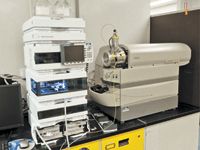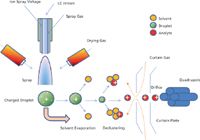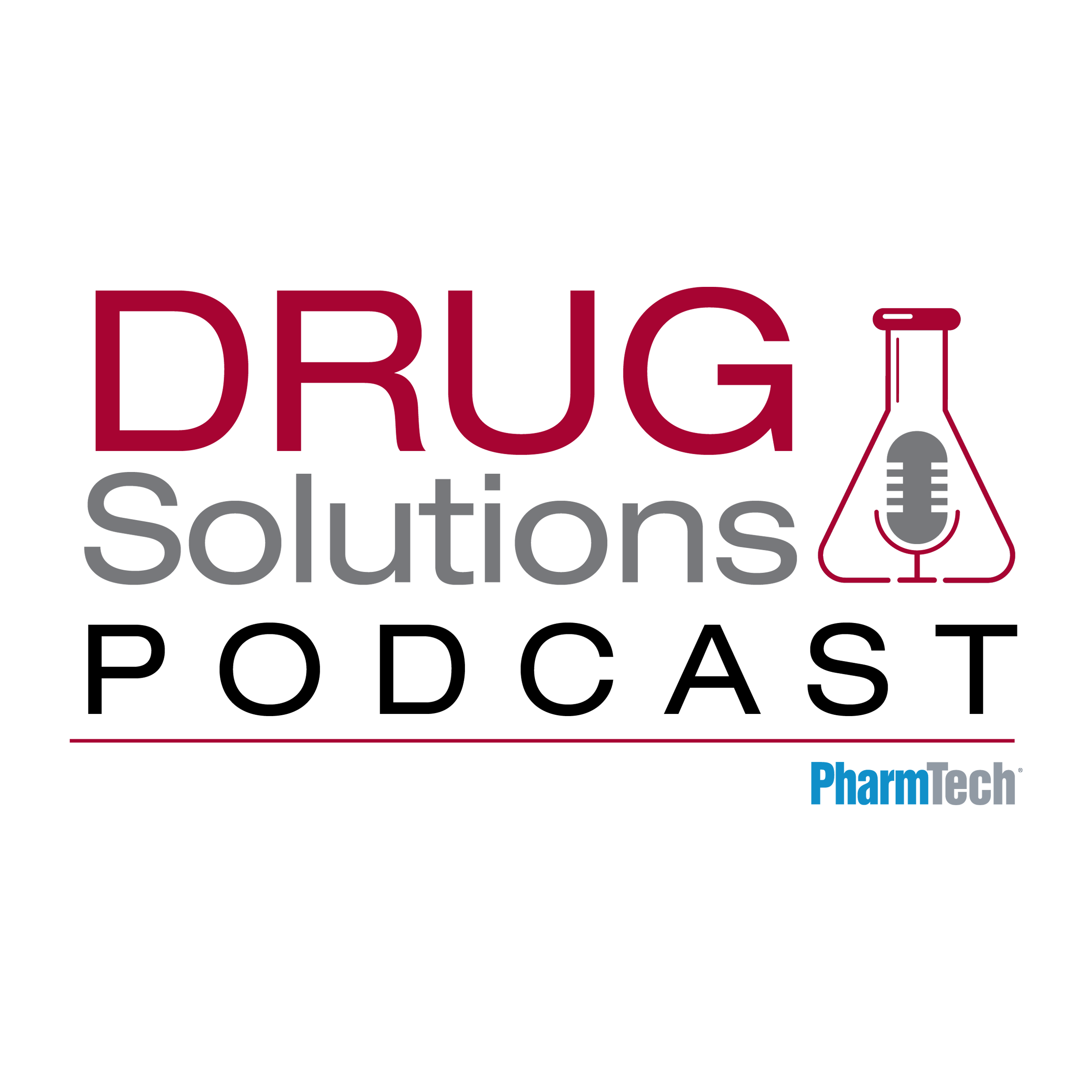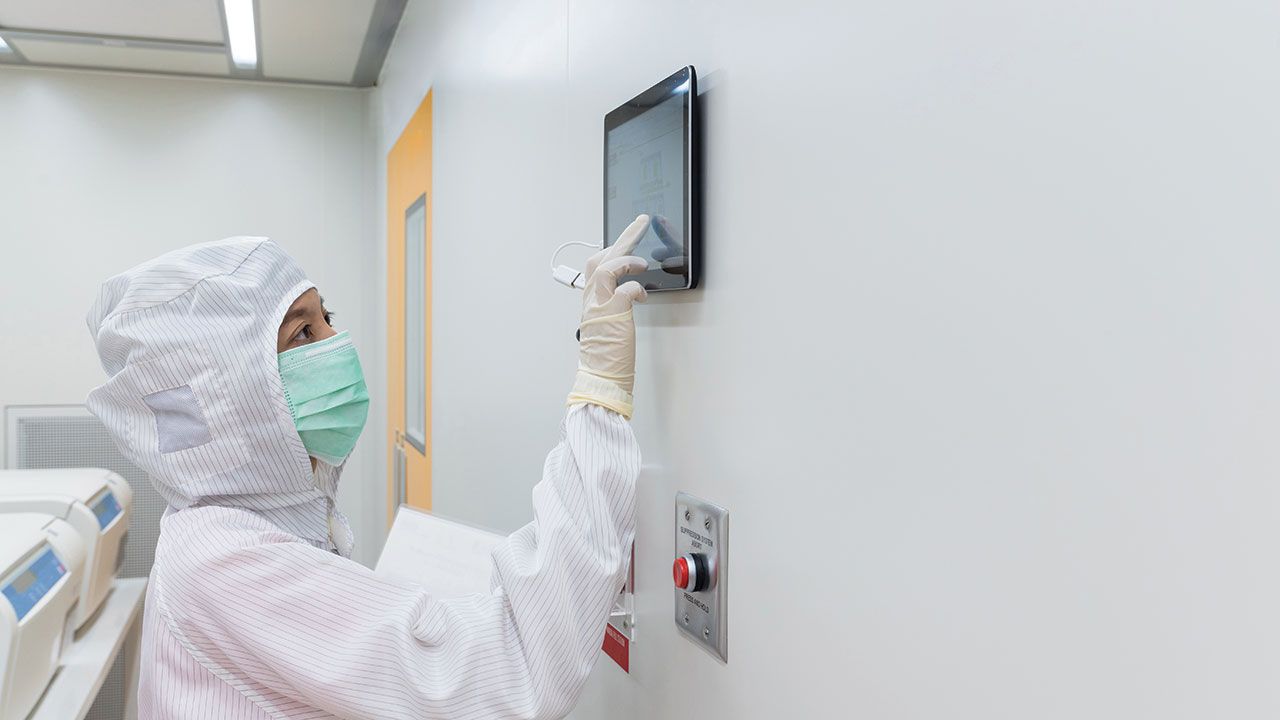News
Article
Pharmaceutical Technology
Using Tandem LC-MS for Cleaning Validation
Author(s):
The author describes how liquid chromatography-mass spectrometry works and explains some of its advantages and disadvantages, particularly compared to high-performance liquid chromatography.
Within any pharmaceutical manufacturing facility it is crucial to ensure that following the manufacture of a product, equipment has been thoroughly cleaned to avoid risks of any carry over into the following product. The process by which this is achieved is called cleaning validation, and an approach for conducting such validations is to develop a sequence of operations likely requiring the application of solvents or detergents and rinses. It must be demonstrated that this sequence of operations can remove traces of product residues down to levels that do not present risks to patients that may receive them as carryover components in the next product manufactured on the same equipment train. To collect data, swab samples taken from equipment surfaces or rinsates (i.e., washes that are used for the rinsing out of equipment after they have been treated with detergent) are analyzed. Typically, samples of the final washes are taken for analysis.

Geoff Carr, PhD
If a validated cleaning procedure has not been developed, it will be expected that swab or rinsate analyses will be conducted on each occasion to demonstrate effectiveness of the cleaning procedure; this practice is referred to as cleaning verification.
For both cleaning validations and verifications, analytical testing of samples is a crucial step. Typically, analytical procedures that are specific for the APIs that were used for the manufacturing of previous products are applied. It is expected that a separate analytical procedure will be developed and validated for each individual API that is handled in any manufacturing facility. High-performance liquid chromatography (HPLC) is probably the most widely used analytical procedure for this application with ultra-high performance liquid chromatography (UHPLC) gaining increasing popularity, but liquid chromatography-mass spectrometry (LC-MS) also offers potential opportunities.
How LC-MS detection works
For mass detection to work, various analyte components that elute from the chromatographic column must become ionized. Ionization may be achieved using electro-spray ionization (ESI). An example of an MS detector (MDS SCIEX, AB Sciex) is depicted in Figure 1, and Figure 2 depicts the layout of the electrospray of an MS detector. As shown in Figure 2, the effluent from the HPLC column is directed through a nebulizer that is maintained under a high voltage. The voltage can be selected for either positive or negative polarity depending on the conditions required for the components of interest. The charged droplets are subjected to heat to remove solvent, which creates a charged aerosol that is directed into the MS quadrupole.

Figure 1: High-performance liquid chromatograph (Agilent 1200) with attached triple quadrupole mass spectrometer (MDS SCIEX). (ALL FIGURES ARE COURTESY OF THE AUTHOR)
A quadrupole system provides the mechanism for discriminating between different components within the sample under test on the basis of M/z values, in which M is the molecular weight and z is the magnitude of charge. For example, the ESI process could lead to single or double charged species or even higher depending on the chemical structure of the component concerned. By varying the magnetic field within the quadrupole system, species of different M/z values may either be eliminated or directed onto the instrument detector.

Figure 2: Diagram showing the layout of the electrospray system of a mass-spectrometer detector; LC is liquid chromatograph.
The configuration described in Figure 2 is for a single quadrupole instrument (i.e., LC-MS). An even more discriminating system is provided by a triple quadrupole approach (i.e., LC-MS-MS). In this case, the species that are selected by the first quadrupole (Q1) are directed into a second quadrupole (Q2), which serves to collect the particular M/z species of interest and then direct them into a third quadrupole (Q3). Within Q3, the species are subjected to collisions with other atoms or molecules that are often provided by allowing a small volume of nitrogen into the system. Collisions lead to fragmentations and resulting fragment ions may then be used as a basis of the analysis required.
Advantages and disadvantages of LC-MS
Cost. The price of a typical HPLC system with UV detection is approximately US$77,000. The price of a typical triple quadrupole MS detector is approximately US$193,000, and the user must still also purchase an HPLC front end for the system. In addition, at least two systems are recommended for any organization considering the use of the LC-MS approach so that a back-up system is available. Pharmaceutical manufacturing facilities are scheduled to very tight timelines. Any downtimes, such as those due to cleaning following the manufacture of a batch and analytical testing of swabs and release formalities prior to manufacture of the next product, must be kept to a minimum; delays due to breakdowns of analytical equipment cannot be tolerated.
Applicability. HPLC is most often applied using ultraviolet (UV) light absorption detectors, which require that the chemical structures of analytes of interest include a chromophore (i.e., chemical structural features that absorb UV light). For most compounds of pharmaceutical interest, this is frequently the case, but there are exceptions which may require other types of detection. MS detection is appropriate for any analyte, provided that it can be ionized. Since most can be ionized, this approach has almost universal applicability.
Sensitivity. Analysis for cleaning residuals is an example of an application that requires very high sensitivity. LC-MS is capable of providing reliable quantitation of trace components from 100 to 1000 times lower than HPLC with UV detection.
Speed. HPLC runtimes are extremely variable depending on the particular method concerned. Run time is the time from the injection of the analytical solution into the chromatograph to the end of the resulting chromatogram. Run times of 5–10 or even 20 min. are not unusual. With LC-MS, typical run times are one to two min. System set-up time is also much reduced for LC-MS, as the same LC column and mobile phase can be applied for many applications. Each analysis will involve a sequence of injections, including those required for system suitability, standard solutions, and sample solutions. Chromatograms then need to be processed into analytical reports, and data must be reviewed and receive lab organization approval. Overall, Patheon has found that lab turnaround time for analysis of swabs is about 24 h with HPLC and about 8 h with LC-MS.
Acknowledgements
The author would like to gratefully acknowledge the valuable help that was provided by Heng Yao in the preparation of this article.
Geoff Carr, PhD, is director of Analytical Development at Patheon, Mississauga, Ontario, geoff.carr@patheon.com.
Newsletter
Get the essential updates shaping the future of pharma manufacturing and compliance—subscribe today to Pharmaceutical Technology and never miss a breakthrough.





